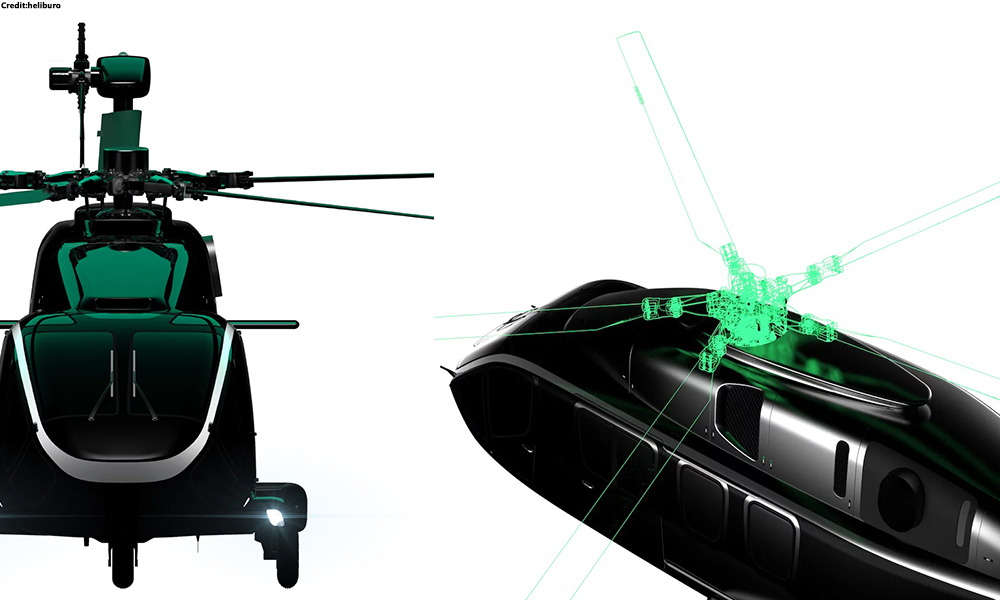Defence
Fascinating Facts About the FC-31 Fighter Aircraft

Every nation aspires to develop advanced fighter jets, and China is no exception, aiming to create next-generation aircraft that can rival Western counterparts.
In this article, we’ll explore China’s second-most advanced fighter jet and its key features.
Fc-31 is a stealthy twin-engine multirole fighter from China. Its potential as an export fighter is attracting international interest, and it is poised to reshape China’s role in the global aerospace market. This impressive aircraft made its maiden flight on October 29, 2021, marking a significant milestone in China’s aviation capabilities.
The Shenyang FC-31 Gyrfalcon, also known as the J-31 or J-35, is a Chinese prototype mid-sized twinjet 5th-generation fighter aircraft developed by the Shenyang Aircraft Corporation. Featuring a catapult launch bar and a wing-fold mechanism, the FC-31 showcases advanced engineering and design tailored for modern aerial combat.
1. Size and Design: The FC-31 is a medium-sized fighter jet designed with stealth and agility in mind. It measures approximately 16.9 meters (55.4 feet) in length, with a wingspan of around 11.5 meters (37.7 feet), and stands about 4.8 meters (15.7 feet) tall. Despite being smaller than the Chengdu J-20, its dimensions make it an agile and flexible platform suitable for various missions.
2. Intended Role: China aims to replace its aging fleet of J-10 and J-11 warplanes with the FC-31. When paired with the J-20, the FC-31 represents a significant step toward China’s goal of indigenously mass-producing systems that can reliably challenge American and Russian military systems. This strategic pairing enhances China’s air defense and offense, showcasing its ability to produce competitive fifth-generation fighter jets.
3. Advanced Technology: The FC-31 is equipped with a state-of-the-art glass cockpit featuring multifunction displays (MFDs) and a helmet-mounted display (HMD) system. These advanced technologies provide pilots with real-time crucial flight and combat information, enhancing situational awareness and combat efficiency. The aircraft also boasts a fly-by-wire (FBW) control system, which improves handling and stability during complex maneuvers, making it a highly agile and responsive fighter.
4. Avionics and Radar: The avionics and radar systems of the FC-31 are designed to detect and track enemy targets effectively. The aircraft is believed to be equipped with an active electronically scanned array (AESA) radar, offering superior range, resolution, and resistance to electronic jamming compared to older radar systems. This advanced radar enables the FC-31 to identify and engage multiple targets simultaneously, significantly enhancing its combat capabilities.
5. Performance and Armament: The FC-31 can take off with a maximum weight of around 28,000 kilograms (61,729 pounds) and can reach speeds up to Mach 1.8 (1,381 mph or 2,222 km/h). For stealth missions, it features an internal weapons bay, but it also includes external hardpoints for additional weaponry, providing flexibility in various combat scenarios.
6. Stealth and Engine: The FC-31 employs stealth coatings instead of “baked-in” fiber-mat stealth, a distinctive feature that differentiates it from other stealth fighters. The aircraft is set to eventually incorporate the Guizhou WS-19 turbofan engine, a fundamentally new design with advanced technology similar to the J-20’s engine. The WS-19 engine boasts a maximum thrust of 10 tonnes-force (98.1 kN), promising enhanced performance and efficiency.
7. International Interest: Recently, Pakistan has embarked on an ambitious endeavor to enhance its air defense capabilities with the acquisition and potential local production of the FC-31 stealth fighter jet. Talks are reportedly underway between the Pakistan Air Force (PAF) and the Shenyang Aircraft Corporation, signaling a significant leap forward for Pakistan’s military aviation prowess. This move highlights the FC-31’s appeal on the international stage and its potential to influence global military aviation dynamics.

Defence
Russia’s NV.17 Hybrid Helicopter Aims to Balance Light and Heavy Helicopter Needs

As Western sanctions continue to impact Russia’s aviation sector, the country is making significant strides in advancing its domestic aerospace capabilities.
Despite the ongoing challenges, Russia has unveiled the Heliburo HB.17, a cutting-edge hybrid-powered medium-class helicopter that promises to reshape both commercial and military aviation.
The helicopter is currently in the technical design phase, with plans for its first flight slated for 2027. This marks a major step forward in Russia’s efforts to modernize its aviation fleet and reduce reliance on foreign technology.
This country tops visa rejections in the popular Schengen countries
The HB.17 is designed as a versatile, multi-role aircraft, capable of performing a wide range of functions. It is built to handle cargo transport, passenger carriage, reconnaissance, and close air support missions. With its robust design and flexible capabilities, the HB.17 is expected to meet the needs of both military and commercial operators, offering a solution for missions requiring a greater capacity than light helicopters but avoiding the limitations of larger aircraft.
One of the most innovative features of the HB.17 is its hybrid power plant. This combination of conventional and electric technologies enhances fuel efficiency, allowing the helicopter to stay airborne for up to seven hours without needing to refuel.
This extended operational endurance makes the HB.17 particularly well-suited for long-duration missions, providing a significant advantage over traditional helicopters. Additionally, the HB.17 will be equipped with modern avionics, ensuring advanced navigation, communication, and operational capabilities.
Qatar Airways Cargo and MASkargo Launch New Strategic Partnership
The HB.17 is positioned to compete with other medium-class helicopters such as the Kamov Ka-60/62 and the Mil Mi-38. However, its hybrid powerplant and modern avionics set it apart, offering a more efficient and technologically advanced alternative.
Its multi-role versatility, combined with its fuel efficiency and cutting-edge systems, gives it a competitive edge in the evolving aviation landscape. The introduction of the HB.17 follows recent reports of Russia receiving a new batch of armored vehicles from the UAE-based Streit Group.
Russia has traditionally focused on producing helicopters for defense purposes, but this time, it appears to be venturing into the civilian helicopter market with the HB.17.
This, along with the ongoing development of the HB.17, reflects Russia’s continued efforts to modernize its military assets and increase its self-reliance, even as sanctions continue to pressure its defense and aerospace sectors.
As Russia faces mounting geopolitical challenges, the HB.17 stands as a symbol of resilience, technological innovation, and determination to maintain its military and aviation capabilities.
-

 Aviation2 months ago
Aviation2 months agoMicrosoft Flight Simulator Raises $3 Million to Bring Back the An-225 Mriya
-

 Airlines2 months ago
Airlines2 months agoQatar Citizens Can Travel to the United States Without a Visa
-

 Aviation2 months ago
Aviation2 months agoQatar Airways bans these new Electronic Devices on plane
-

 Airlines2 months ago
Airlines2 months agoJapan Airlines Rolls Out Free Domestic Flights to International Passengers
-

 Defence2 months ago
Defence2 months agoWhich Country Has the Largest Fleet of Fighter Aircraft?
-

 Airport2 months ago
Airport2 months agoWestern Sydney Airport Welcomes Its First Plane After 6 Years of construction
-

 Airlines4 days ago
Airlines4 days agoDAMAC Air: Dubai’s New Luxury Airline Offers Free Flights for Registration
-

 Aviation2 months ago
Aviation2 months agoDid you know ? Once Boeing 747 carried 1088 passenger in 1991








